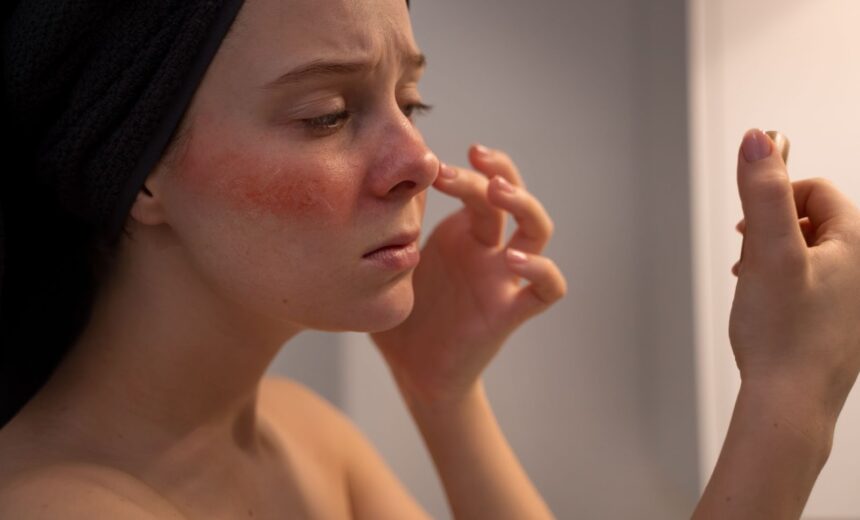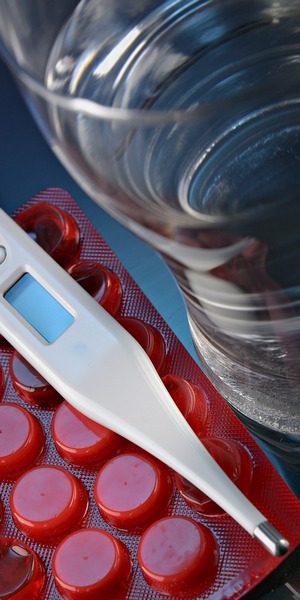Saying Goodbye to Facial Rash: Effective Solutions

Surprises of the skin in the form of rashes can truly be unwelcome, particularly when they decide to make a grand entrance on your facial canvas. This occurrence is not just a matter of aesthetics, as a rash taking up residence on your face can escalate into a maddeningly itchy and distressingly uncomfortable situation. The art of tending to a facial rash is rather uncomplicated, but necessitates a careful approach to prevent exacerbating the predicament.
It is practically common knowledge that giving in to the temptation of scratching is ill-advised when faced with parched skin, raised bumps, and the canvas of redness. Steering clear of this act becomes paramount to fend off the potential introduction of bacteria to the affected region, a scenario that could readily lead to an unwanted infection setting up shop. Over and above the fundamental axiom of hands-off engagement, you might want to experiment with these uncomplicated yet effective home-based treatments for facial rashes prior to scheduling that doctor’s appointment.
Chilled Compress Technique
Utilizing a chilled compress on the impacted region can serve as an immediate remedy for discomfort. This method works by decelerating the blood circulation to the surface of the skin, which in turn decreases swelling, inflammation, and itching. There are several ways to achieve this: one can use frozen gel packs, a dampened cloth refrigerated for a while, or even a pouch filled with ice cubes. It’s paramount to always interpose a thin fabric or cloth between the icy compress and the skin. This step ensures the skin remains safeguarded against any potential irritations or harm.
Hydrocortisone as a Skin Solution
For those battling facial rashes, creams or ointments infused with hydrocortisone come as a rescue. Many low-concentration variants of these products are conveniently available without prescriptions, making them a go-to for itch alleviation. When using hydrocortisone cream, it’s crucial to apply it delicately, forming a sheer layer on cleansed and parched skin. Subsequent to its application, it’s always advisable to rinse hands meticulously to ensure no residue remains.
Aloe Vera: Nature’s Soothing Agent
Beyond its popular use for alleviating sunburns, aloe vera gel is a treasure trove of essential vitamins and minerals. These constituents are believed to manifest anti-inflammatory properties. Aloe vera’s history is steeped in tales of its therapeutic attributes and its prowess in skincare, often celebrated for its calming abilities.
It’s pertinent to mention that the historic acclaim of aloe vera, while widely acknowledged, hasn’t been conclusively verified by scientific research. Nonetheless, its popularity remains undiminished. For optimal results, it’s suggested to use gel directly extracted from the aloe plant. However, for those who may not have access to fresh aloe leaves, various commercial preparations of the gel are readily available in the market. Prior to its application, ensure the skin is impeccably clean and devoid of moisture.
Coconut Oil: Nature’s Skin Soother
Derived from the luscious meat and nourishing milk of coconuts, coconut oil forms a delicate semisolid that gracefully liquefies upon encountering mild heat. This oil is notably abundant in saturated fats, bestowing it with a range of healthful attributes. Beyond its use as a culinary staple, it stands out for its potent antiseptic and anti-inflammatory benefits. For those seeking a natural remedy for their skin concerns, coconut oil presents a splendid option. Not only can it act as a lavish moisturizer, but its gentle, soothing properties also make it ideal for calming inflamed, irritated, or rash-afflicted skin.
Tea Tree Oil: A Global Skin Ally with Indigenous Roots
Hailing from the rich traditions of the Australian Aboriginal communities, tea tree oil’s medicinal prowess has been renowned for generations. Today, its therapeutic impact is acknowledged and embraced globally. Studies, such as the one conducted by the American Society of Microbiology, have delved deep into its antimicrobial traits, offering scientific backing for its bacteria-fighting capabilities. These antibacterial attributes make tea tree oil a potent solution for addressing facial rashes. However, caution is imperative: to prevent the skin from becoming excessively dry or irritated, one should refrain from using tea tree oil in its undiluted form. A harmonious blend with carrier oils, like coconut or olive oil, or even a daily moisturizer, ensures a balanced application.

Identifying When to Consult a Medical Expert for Rashes
While many rashes can be addressed with home-based treatments, it’s crucial to recognize when professional intervention becomes necessary. Here are the key signs:
- Persistence and Spread: Should the rash stubbornly remain even after two weeks or expand to broader areas, it’s prudent to consult a medical professional. Over-the-counter remedies might not suffice, and a more potent solution could be required;
- Febrile Responses: A rash accompanied by a fever demands immediate attention. This combination could be indicative of underlying severe conditions. Prioritize a swift visit to an emergency room or urgent care;
- Manifestation of Blisters and Open Sores: These symptoms might hint at an allergic response. Such rashes are best evaluated and treated under expert guidance;
- Experiencing Discomfort: Pain is an unambiguous signal from the body highlighting an anomaly. A painful rash should never be overlooked and merits a professional assessment;
- Symptoms of Infection: Warmth, swelling, pus discharge, or crust formation on the affected region suggest an infection. It’s imperative to address such symptoms with urgency and consult a physician.
Lastly, it’s always advisable to lean on the side of caution. When uncertain, seeking the opinion of a healthcare professional ensures safety and peace of mind. There’s no need to endure prolonged distress waiting for a rash to intensify before seeking expert advice.
Conclusion
In conclusion, managing and eliminating a rash on the face requires a multifaceted approach that combines proper skincare, identifying potential triggers, and seeking professional medical advice when necessary. The skin’s sensitivity and the variety of factors that can lead to facial rashes underscore the importance of a tailored strategy.
Ultimately, patience and consistency are key. Facial rashes can take time to heal, and it’s important not to get discouraged if immediate results aren’t achieved. By combining a proactive approach to skincare, a conscious effort to identify triggers, and professional guidance, individuals can effectively address and eliminate facial rashes, restoring their skin’s health and confidence.








